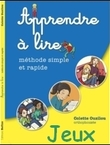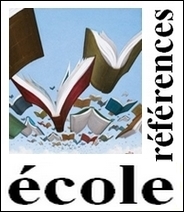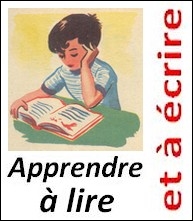-

http://www.sedl.org/reading/framework/elements.html#decoding
Let’s begin by picturing a child reading a book silently to herself. She's just sitting there, fairly motionless, staring at a book. Occasionally, she turns a page. Sometimes she laughs quietly to herself for no apparent reason. It is a serene and beautiful picture, but only because we know that inside her head, she is exploring a story and listening to the author tell a tale through a voice that only she can hear. If she was sitting motionless, occasionally laughing to herself while staring intently at a potted plant, it would be somewhat disturbing, but because she is acting this way with a book in her hands, it's a Kodak moment.

The silent, motionless act of reading belies the activity happening inside the reader's head. The symbols on the page are being converted into a meaningful message that the reader understands—a message constructed by an author that she has probably never met. In the reader’s head, the author's tale is unfolding word-for-word exactly as the author wrote it, but the reader scarcely moves a muscle.
As the reader sits motionless, she is simultaneously decoding the text and comprehending the message contained within the text. That is what reading is all about—decoding and comprehension. The integration of these two skills is essential to reading, and neither one is more or less essential than the other. If somebody was kind enough to read the story out loud to her, she would not need to decode it herself. She could sit with her eyes closed, listen to somebody else tell the story, and just focus on comprehending it. The comprehension she experiences listening to somebody else read aloud is the same comprehension she would experience reading the text silently to herself. There are subtle differences, but essentially, the only thing that makes reading different from listening is the act of decoding the text.
If reading is the product of two cognitive elements (language comprehension and decoding), two questions must be addressed:
- What is required to be good at understanding language?
- What is necessary to be good at decoding text?
Examining each of these elements, we find a collection of interrelated cognitive elements that must be well developed to be successful at either comprehending language or decoding. This text will examine both language comprehension and decoding, along with the subordinate cognitive elements that underlie each. All of these underlying knowledge domains will be described as discrete and distinct cognitive elements, but only for the benefit of this examination. It is important for reading teachers to understand what these elements are and how they fit in the "big picture" of reading acquisition, but it is also important for teachers to understand that these elements are all interdependent and interrelated in a child’s head.
See all -->
http://www.sedl.org/reading/framework/elements.html#decoding
Sauvegarde :
Télécharger « Cognitive Elements of Reading.odt »
Télécharger « Cognitive Elements of Reading - References.odt »
Théorie et pratique














